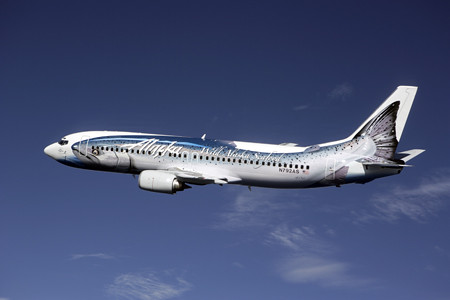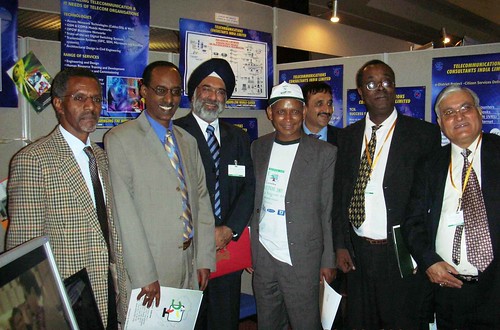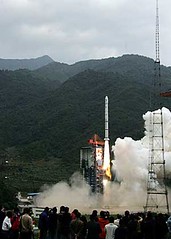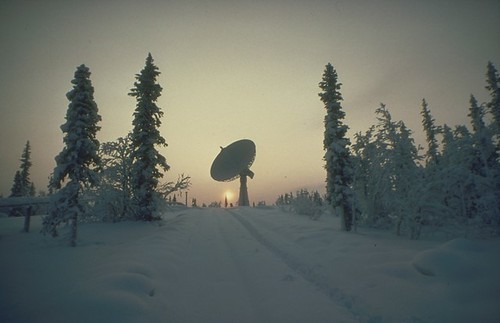Inflight Wireless — progress?
Monday, November 26th, 2007Last week, while we were preparing for a Thanksgiving feast, we missed a couple important FCC announcements that may pave the way (finally) for inflight wireless broadband (or aeronautical mobile satellite services – AMSS).
On Tuesday the FCC granted ARINC’s request:
By this Order and Authorization, we modify ARINC Incorporated’s (“ARINC”) Aeronautical Mobile-Satellite Service (AMSS) authorization by granting ARINC’s request for authority for aeronautical earth stations (AES) to communicate with the Estrela do Sul satellite at the 63° W.L. orbital location, in various portions of the conventional Ku-band1 over the North Atlantic Oceanic Region (NAOR). Our action expands the availability of two-way broadband connectivity to passengers and crew for international flights and continues our efforts to enhance competition in an important sector of the mobile telecommunications market.
ARINC’s product is called SKYLink. It claims to be "the fastest in-flight broadband satellite service for business aircraft passengers" (which may be a bit dishonest considering Row 44’s technology – discussed later). It runs on a tail-mounted antenna and can provide speeds of up to 3.5 Mbps at up to 47,000 feet. SKYLink has coverage throughout the United States and on trans-atlantic flights to Europe (see: coverage map).
ViaSat Inc., another competitor in this rising market, also received good news:
With this order, we grant ViaSat, Inc. blanket authority for domestic operation of up to 1,000 technically identical transmit/receive earth stations aboard commercial aircraft. These earth stations will provide Aeronautical Mobile Satellite Service (“AMSS”), using the standard Ku-band frequency ranges 14.0-14.5 GHz (Earth-to-space) and 11.7-12.2 GHz (space-to-Earth), to link with leased transponders aboard the AMC-6 satellite operating at the 72º West Longitude orbital location. The ViaSat aircraft earth stations will provide two-way broadband communications for passengers and aircrew members aboard commercial airliners and private business jets, with access to email, the Internet, and corporate virtual networks. Implementation of the ViaSat AMSS system pursuant to this authorization will enhance competition in an important sector of the mobile telecommunications market in the United States.
ViaSat’s program, to be operated with its ArcLight technology, is very similar to Boeing’s plan to place 800 technically identical transmit and receive mobile earth stations. We were big fans of Boeings announcement when we discussed it last year, and were disappointed when it failed due to a lower-than-expected U.S. demand.
Finally, Aircell announced a partnership with E Technologies to implement the company’s network performance management system:
GenerationE is a premier IBM Tivoli partner with extensive experience in architecting service performance management solutions like the Tivoli Netcool solution. Aircell has developed inflight broadband services to allow passengers to use existing Wi-Fi enabled PDAs and laptops while airborne. American Airlines and Virgin America have both signed deals to deliver high-speed broadband connectivity on their domestic flights beginning in 2008.
Together with generationE, Aircell will supplement its current network monitoring and management capabilities on the company’s cutting-edge satellite and air-to-ground broadband cellular networks. Trending and demand forecasting of its cellular network will be further optimized with new capabilities provided by generationE, as well as enhancements to its data center monitoring.
"At Aircell, we measure success on both the reliability of our systems and cost of services," explained Mark Malosh, Vice President of Operations at Aircell. "We are confident that our partnership with generationE will help achieve both of these goals by helping us manage and monitor the performance of our expanding network environment."
The software, IBM Tivoli Netcool Performance Manager, will be used to manage Aircell’s terrestrial network of cell sites and its data centers, which provide fault tolerance and load-balancing capabilities to the Aircell network infrastructure. The software will report critical metrics such as latency measurements, and allow Aircell to conduct root cause analysis to quickly isolate, analyze and resolve network problems.
With these technology/provider announcements and some promising airline pledges, things are looking up for inflight broadband. As we discussed last month, Alaska Airlines will be launching an inflight wireless system within the six months using a system developed by Row 44 of California that uses a constellation of Hughes satellites. Unlike ground-based systems, this will provide seamless connectivity, even on flights to remote regions of Alaska and across the Pacific to Hawaii.
Alaska Airlines may even make the service free. That’s something SKYLink could probably not accommodate, as SKYLink offers a maximum download speed of 3.5 mbps, while Row 44 will provide about 45mbps. That’s enough capacity for a plane-full of passengers to connect to the free service.






 Earlier this month,
Earlier this month, 


